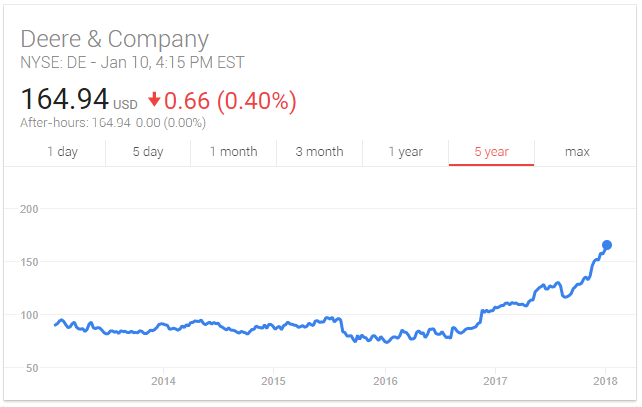With AT&T (T) and Time Warner (TWX) currently fighting in court to prevail over the federal government in its anti-trust lawsuit, all eyes in the merger arbitrage world are focused on whether so-called "vertical" mergers will be endangered in the Trump Administration. Typically, lawsuits to block M&A transactions have centered on competitors trying to get together to reduce competition and increase pricing power post-combination, but the current fight puts vertical integration in the crosshairs, as the infrastructure company is trying to add content to diversify its business. Given how low sentiment is on Wall Street for paid television content production, investors clearly don't believe a simple merger would give the content producers monopolistic power, but we will have to see what judges think.
One of the more interesting cases is Express Scripts (ESRX), the large pharmacy benefits management company that was recently (March 8th) offered a 31% premium to be acquired by health insurer Cigna (CI). Many believed that ESRX was in play after becoming the lone major PBM to not have a dance partner. And after CVS Health (CVS) -- which owns another large PBM in Caremark -- made a bid for Aetna (AET), it was clear that insurance and pharmacy benefits management were consolidating to the point where ESRX as a standalone business was becoming obsolete.
Express Scripts stock was trading at $73 when the $96 deal price was announced, and the stock jumped initially... for a few hours. It now fetches around $70, as investors bet that vertical mergers, even if allowed in the media business, have a steeper hill to climb, in part because multiple deals are pending and allowing all of them to go unchallenged, could be seen as risky by the government.
With ESRX having 28% upside if the deal is allowed, it might seem like a no-brainer risk/reward situation to go long the stock. After all, at current prices the shares trade for just 10x 2017 earnings per share, with that multiple falling to just 7.5x if you believe the mid-point of the company's 2018 earnings guidance ($9.37), which is getting a big boost from a new, lower corporate tax rate.
The headwind in this case is that Express Scripts is slated to lose one of its biggest customers (Anthem), in 2020. Interestingly, Anthem sold its PBM unit to ESRX in 2009, which paved the way for the current client relationship. However, Anthem is regretting the contract terms (they claim they are being overcharged, whereas ESRX says they are simply abiding by the terms of their contract) and will shift its business to CVS in 2020, while ironically starting their own PBM business internally (again). If only Anthem had kept the business in-house all along...
It does appear that Anthem is getting the short end of the deal. Express Scripts earned EBITDA of $5.29 per prescription claim in 2017 across its entire business, but with Anthem it is making over $10 per claim. So you can see why Anthem is upset and wants a new partner. ESRX will make good money for the next two years -- through 2019 -- and then will see 1/3 of their EBITDA vanish. And that explains why the stock trades at 7.5x 2018 earnings. Assuming the Cigna deal is blocked, earnings in 2020 are likely to be in the $6.50 per share ballpark, giving the stock an "adjusted P/E" of around 11x, and making Cigna's offer worth about 14x.
While I have not completed all of my due diligence on Express Scripts, it appears to be worth a look. Absent a buyout from Cigna, the company faces mounting criticism as a middleman in the pharmaceutical sector that supposedly drives up costs for consumers, despite existing for the purposes of negotiating discounts for its corporate clients. The way I see it, if ESRX was not earning its cut, its customers would fire them. Anthem aside, ESRX will see a client retention rate in 2018 of between 96 and 98 percent, according to the company. Without ESRX, employers would have to move their pharmacy plan management in-house, which would probably mean worse results (due to lack of experience), and higher costs (the point of outsourcing in the first place is to save money and resources). If corporations could do what PBMs do, internally and for the same or less money, why would companies like Express Scripts exist at all?











